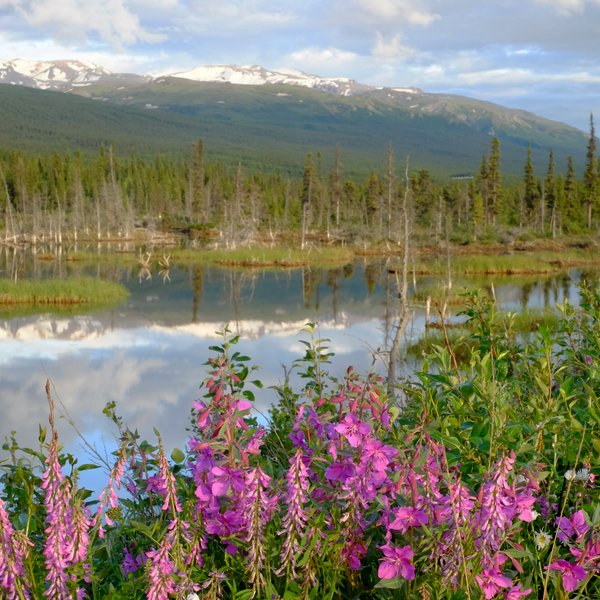Project information
“We are building the digital infrastructure and taxonomic basis for the new, community-created Flora of Alaska.”
The plants of Alaska are a dynamic mixture of arctic, boreal and temperate rain forest species, assembled during millenia of migration between Asia and North America. They are also on the front lines of climate change, experiencing more rapidly changing conditions than plants elsewhere in the United States, resulting in rapid range shifts and local extinctions. The last comprehensive Flora of Alaska was completed fifty years ago, meaning that vast amounts of digital data and new taxonomic work remain poorly integrated; this is a major barrier to tracking the changing distribution of native Alaskan plants and new arrivals. This project will build the digital infrastructure to integrate names, herbarium specimens, images, citizen science observations, and taxonomic histories and descriptions. It will be innovative in using “taxon concepts” to weave together the data resources.
Taxon concepts offer a level of information precision beyond that of scientific plant names alone, but have yet to be used in a multi-resource database such as this; a sub-goal of the project is to promote and facilitate the use of taxon concepts more widely. As the data infrastructure is developed, the database will be populated with existing digital and scanned-paper information about the plants of Alaska, and with new data (keys, taxonomic accounts) to be generated through the collaboration of stakeholders in a new Flora of Alaska.
The project will also engage the wider community of plant enthusiasts to expand contemporary species occurrence data by incorporating iNaturalist observations. Project staff will give training workshops, and travel to Alaskan villages to work with teachers, thus involving Alaskan youth in the vital process of monitoring shifts in plant distributions.
The project has been funded by the US National Science Foundation: Grant 1759964 to Stefanie Ickert-Bond (PI) and Campbell Webb (co-PI). Project duration: 2018-08-01 to 2021-07-31.
In more detail…
This project will build an online resource that integrates the most important information about the vascular plants of Alaska. It will link the new checklist of Alaskan plant names, a product of years of research by staff of the Herbarium of the University of Alaska (ALA), and the Alaska Center for Conservation Science (ACCS), to online flora resources (the Pan-Arctic Flora and the Flora of North America), and to information digitized from Hulten’s Flora of Alaska, which is the standard reference work but now nearly fifty years old. This database will link taxonomic entities to data about the physical specimens in the herbarium and in other herbaria around the world, and to geo-referenced observations of plants throughout the state, showing images of digitized specimens and of plants in the field (via iNaturalist). The project will also engage in cutting-edge deconstruction of text descriptions in its constituent floras, parsing out data on phenotypic characters of each taxon, and presenting these data in the form of identification resources and contributions to plant knowledge-bases.
At the core of this data integration will be informatics infrastructure based on taxon concepts, which capture not just the names of plants, but also the historical sense in which those names were used: the hypotheses of taxonomists. To populate this taxon concept data layer, we will develop and participate in a workflow for taxon concept mapping among names used in a core set of Alaskan flora publications.
Project staff will actively engage with the community of Alaskan botanists in the development of a new Flora of Alaska. Data generated by stakeholders (including taxon reviews and occurrence data) will be incorporated into the project data platform. Beyond the contribution of significantly advancing our knowledge of the plants of Alaska, this project will benefit the university and society by training graduate and undergraduate students in biodiversity informatics and taxonomy, and engaging with training of K-12 teachers in rural villages of Alaska.
